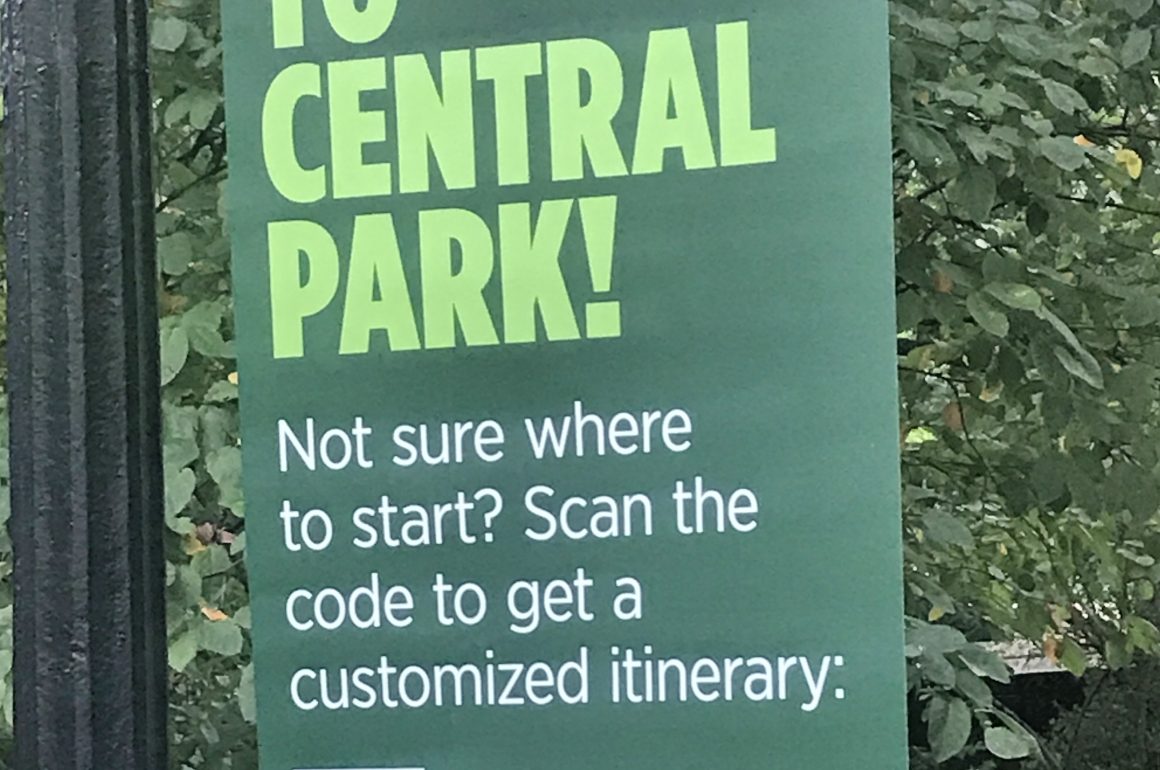
There’s hardly a more magnificent spectacle than flying into LaGuardia Airport at night. Coming in for the landing over the East River one looks left to a cityscape of epic proportions, lit up like a fairytale mountain range. I’m only saying, the Dutch know how to pick a good spot for a city. Location, location, location – we have said it before.
Would birds feel the same way as the business traveller in his aluminium tube with wings? Almost certainly not, because birds head for Central Park, not the airport. So, sneaking away from Climate Week I spent a few hours looking for feathered migrants in the park.
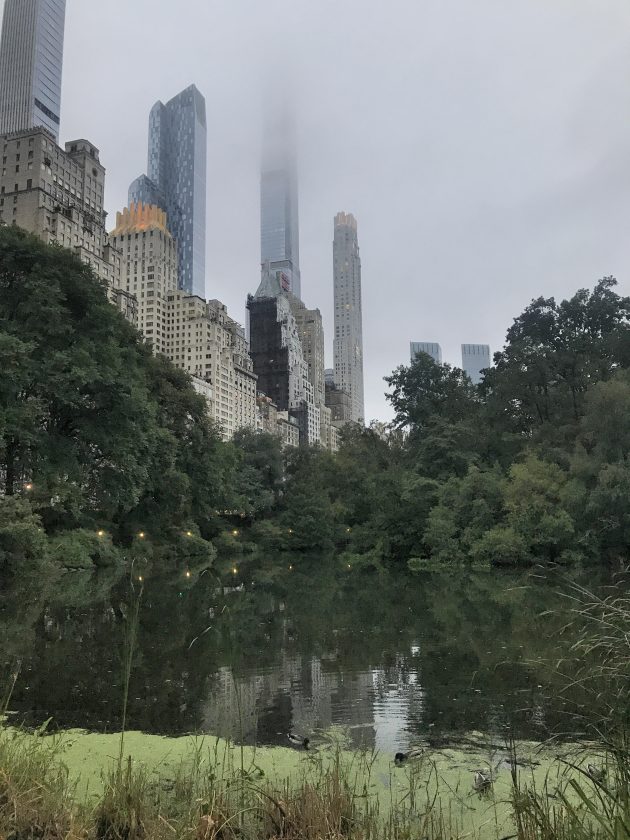
Bright-eyed and bushy-tailed rats (also known as squirrels) welcomed me to The Pond and Hallett Sanctuary at the crack of dawn. Activity was surprisingly low – I really had had high expectations – but I had to settle for Common Yellowthroat, White-throated Sparrow, House Sparrow, American Robin, Grey Catbird (with an atrocious photograph to prove it – this must be a low point even for me), Common Starling, Blue Jay, Mourning Dove with Mallard and Canada Goose on the pond. The bigger Central Park Lake didn’t have waterfowl at all, so getting at least some floaters was not too bad. A bright-eyed and naked-tailed rat (also known as rat) greeted me near the sanctuary – at exactly the same spot I saw a rat in 2017. Since rats don’t live longer than a few years this may well have been my earlier acquaintance’s son or grandson (note: gender determined by size and presence of testis). It’s good to see a familiar face in a strange city!
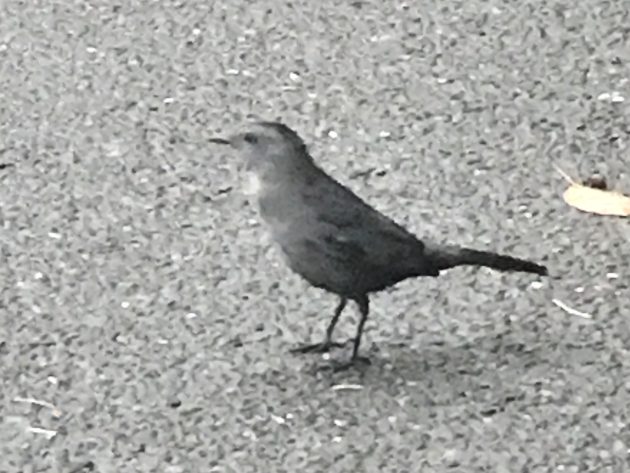
Still, I felt a tinge of disappointment. My intel had been so good. Birding buddy Laura had reached out to her New Yorker friend Phil, and I got some really good information about the two biggest parks in the city. Both Prospect Park and Central Park are great in autumn. Migration could be anything but most common warblers are the American Redstart, Yellow Warbler, Common Yellowthroat, and Black-throated Blue Warbler. With guest appearances by Red-eyed Vireo, Wood and Swainson’s Thrush. The NYC Bird Alliance website has a listing of birding hotspots all over the city, including Central Park. The park won’t be hard to access while you’re in Manhattan. You can grab a train uptown pretty easily, and Columbus Circle is one of the bigger stations in the city and steps away from the park. I was also told to try out “a decent hot dog stand” with Sabrett hot dogs apparently being “iconic and the GOAT of the hot dog world”. The sight of minced meat in a skin, in a bun, covered by mustard, at dawn, turned my stomach – so I had an almond croissant and a coffee instead. Call me a wimp, call me European, but even I have boundaries.
The day was still young, so I explored a few more places in the southern part of the park. Joggers and dog walkers were omnipresent whenever I would get close to the main thoroughfares in the park. Some joggers could pull it off – the Lycra look – others were less successful. Then there was a guy in green camouflage baggy trousers, wearing suspenders and binoculars… I just want to say, who am I to judge? It took me a while to figure out the distribution map of the assorted humanity and avifauna. Main roads: a mob of joggers and people screaming in their phones (held in front of their faces like a jam-covered scone). “I am telling you NOW. I want this done TODAY. No EXCUSES. TODAY. NOW.” The really quiet spots: hammocks with homeless people. The in-between spots: birds. Northern Cardinals were everywhere but hard to see until I figured out that they were hiding from the squirrels, rats and New Yorkers – underneath overhanging leaves.
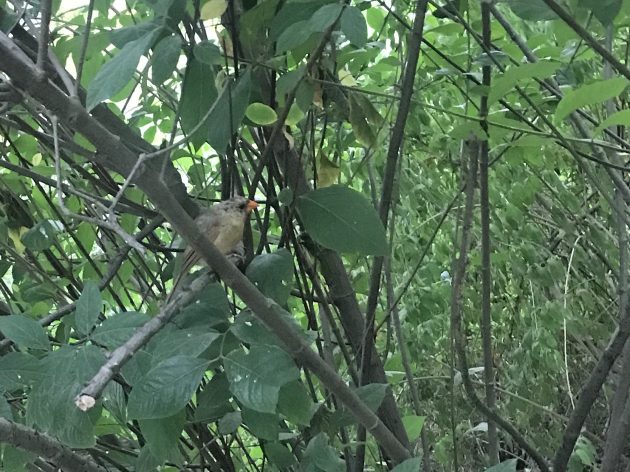
I spotted my first lifer of the day, a Black-throated Blue Warbler, which is a very handsome bird. The photograph was taken by Charles J. Sharp and downloaded from Wikimedia Commons. It is so pretty I should have headlined the image to get you to read this post. Too late now.
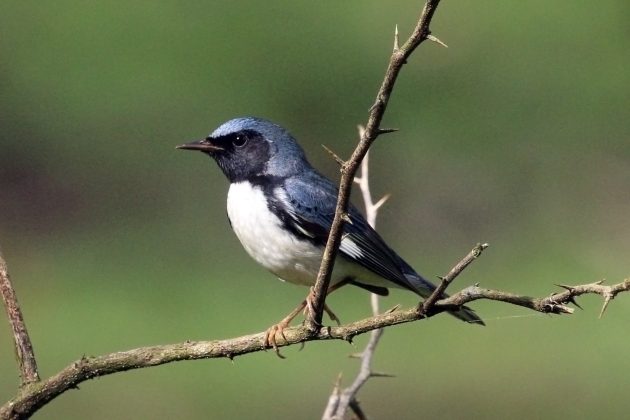
Another lifer: Brown Thrasher on my way to Strawberry Field. More a pilgrimage than birding I was humming Working Class Hero but then: a thrush-like bird among the American Robins. Before I could get my binoculars to my eyes some Lycra-clad [expletive deleted] ran up to me, jumped over the low fence and fell flat on his face in the mulch. Thrush gone. The jogger got up and crawled/ran up the slope. I looked ahead to see what had frightened him to the point he had ignored all signage and common sense. The hardworking New York park people were cleaning the path ahead – nothing special – with a watery solution that smelled distinctly like recycled toilet water. Ah… I walked back and took the path up to avoid being sprayed with subway juice. Carefully scanning the bushes, I was lucky: there it was, a Grey-cheeked Thrush. Same bird or another one, did I care? No, this was lifer number three for the day. At this high, I returned to Climate Week to save the planet from impending doom. It had been difficult birding but persistence had paid off.
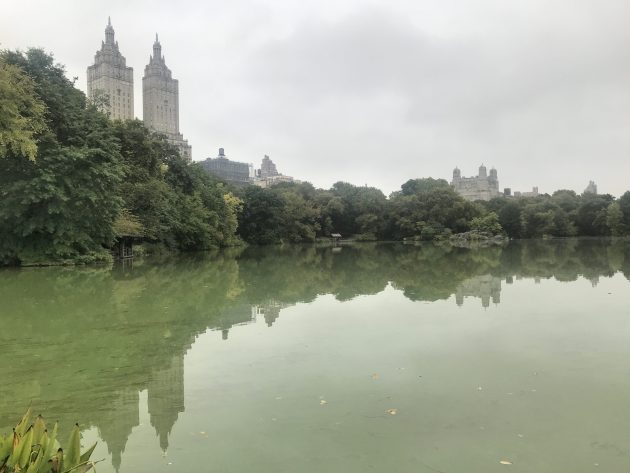
Next time I should probably look for Birding Bob. Birding Bob (and friends) leads bird walks in Central Park… the name alone makes me think this man is a character. He organises regularly scheduled walks for $10 USD that are listed on the calendar on his website. He has been criticised in the past for playing bird calls which has put some birds in harm’s way. There was a Gadwall Incident… Not in the same league as the Molotov-Ribbentrop Pact or the Sykes-Picot Treaty, but still. Bob seems to otherwise have a good reputation for knowing the hotspots and species. And he has been endorsed by the New York Times nonetheless! There are past US leaders that didn’t receive that honour.
Outside Manhattan, in Brooklyn, there’s Prospect Park. Taking everything way too serious as only proper New Yorkers do, they even have an Audubon chapter. You will need to cross the river to get to the park. From Manhattan, one can ride the B, F or G subway line to Prospect Park or just take a taxi or ride share. Google maps is pretty good with subway line directions and times.
A quick check on eBird told me there have been much more warblers since my visit so I may have been too early. Climate change perhaps? Somebody should do something about that!






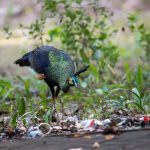
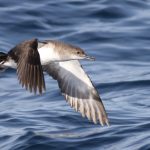
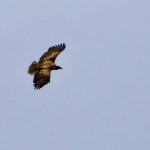

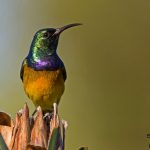


Gray headed? Perhaps Gray cheeked? And….”Birding Bob” is more than a “character.” He is an aggressive, abusive, ongoing negative impact on the birding soundscape and NYC birding community. And, no, the Gray Lady has not “endorsed” him. Bleh.
Thanks Pilgrim. Catharus minimus has been given its proper English name, thanks for the “catch” – these colour-codes do get me occassionally. Silly error, especially since my notes clearly state the grey cheek (…) as a field mark I actually noted. Based on your comments I should probably not look for the person I mentioned. Pilgrim: I am open for a birding trip together next time I’m in town and you can fill me in on the details – there’s obviously more than the Gadwall Incident.